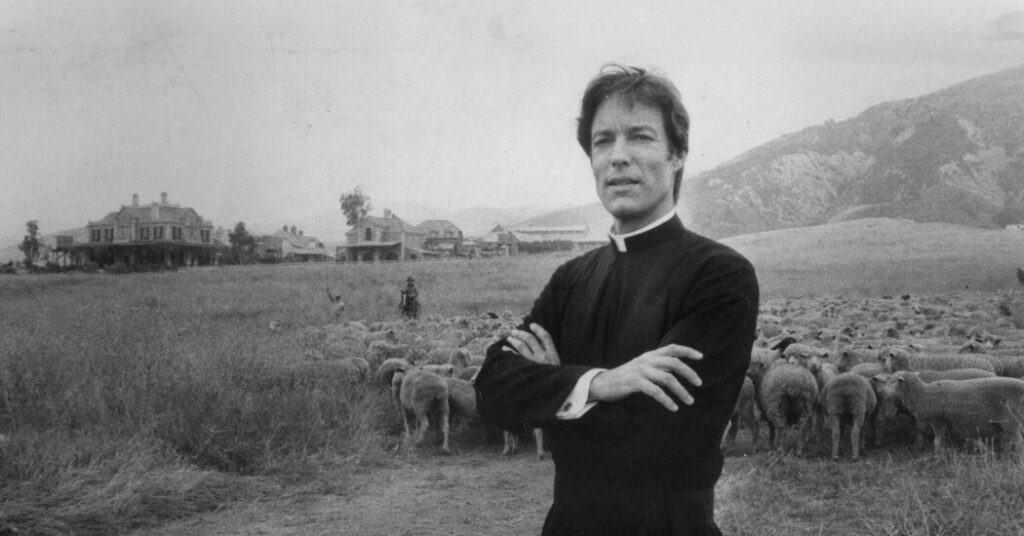When mini-series ruled prime time, their maxi-est star was Richard Chamberlain.
Today we call them “limited series.” But in their 20th-century heyday, under another inapt diminutive, mini-series were the megafauna of TV, lavish events that achieved the kind of cinematic spectacle that was otherwise rare in living-room entertainment of the time. They were TV specials that made TV special.
In the 1970s and 1980s, a number of mini-series — “Roots,” “The Winds of War,” “Lonesome Dove” — dominated the conversation and minted stars. But perhaps no other actor is more closely associated with the genre than Chamberlain, who died on Saturday at 90, because of his star-making, swoon-worthy, emotive roles in “Shogun” and “The Thorn Birds.”
I was young when Chamberlain’s mini-series aired, and “Dr. Kildare,” the 1960s medical series that established him as a heartthrob, was before my time. But his landmark roles helped form my ideas of what TV could do, and what a TV star was.
His mini-series were luxury liners and time machines, whisking audiences to other lands and ages in a way that workaday series couldn’t. In “Shogun,” Chamberlain played John Blackthorne, an English navigator taken prisoner in feudal Japan; in the melodrama “The Thorn Birds,” his priest, Father Ralph de Bricassart, wrestled with his forbidden love for a young woman from an Australian sheep ranching family.
Locations and budgets helped shape the experience, of course, but so did Chamberlain’s screen presence. A Shakespearean actor in between TV roles, he was able to make the manners of decades or centuries before feel warm-blooded and lived-in. He was dignified enough to carry the stories’ grandeur, expressive enough to put them over as the finest grade of pulp.
Though he was a signature star of the 1980s, Chamberlain’s appeal was in a way a holdover of the 1960s and 1970s. He was emotive, with fine features that made a beautiful canvas for fervor and anguish and longing. He could rage and burst with passion, but his appeal was a different mold from the kind of beefy masculinity that would define the 1980s screen celebrity of Stallone and Schwarzenegger.
But make no mistake: He was a first-class hunk, and if you weren’t aware of it, you had a mother or sister or uncle who was. He was blessed with looks, of course, somehow steely and delicate at the same time. But there was also his personal charisma. Even playing morally compromised characters, he evoked wry charm and decency. His banter with Barbara Stanwyck in “The Thorn Birds” — “Sometimes, Mary, I think you’re after my very soul” — is sophisticated and deliciously soapy at once.
Chamberlain might have been a star in many eras, but the era in which he thrived had a lot to do with the kind of celebrity he attained. Indeed, maybe one reason his passing hits so hard today is that so many viewers shared him years ago; he reached peak TV stardom in the early 1980s, before the rise of cable, when the mass TV audience was at the peak of its reach.
He was gifted, yes, but he was also able to express that talent before a larger simultaneous audience than performers before or since have had access to. Some 70 million people watched his “Shogun,” 110 million “The Thorn Birds.” Today, a series like FX’s remake of “Shogun” can monopolize the Emmys, but it can’t monopolize the audience.
That same monoculture came with serious trade-offs, and for Chamberlain, personal ones. The Reagan-era mass culture that made him a leading man was also one in which he could not fully be himself. Chamberlain did not publicly come out as gay until 2003. That one of his most acclaimed roles, in “The Thorn Birds,” was of a man struggling with a socially proscribed love takes on layers in retrospect.
To be a gay man in Hollywood at the time Chamberlain came up was, in a way, to perform a role even when off camera. But onscreen he made an authentic connection with millions, in an age when network TV was as mini, and as big, as it would ever be.
https://www.nytimes.com/2025/03/30/arts/television/richard-chamberlain-shogun-thorn-birds.html


